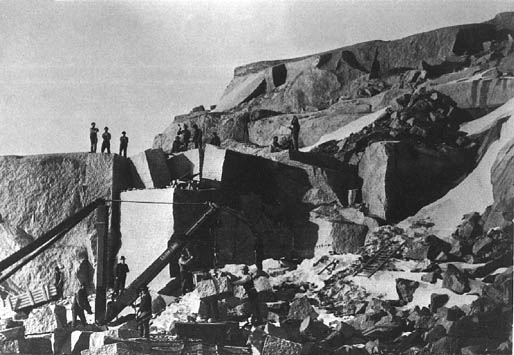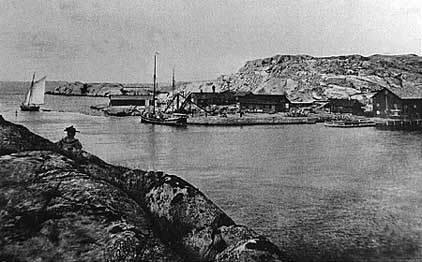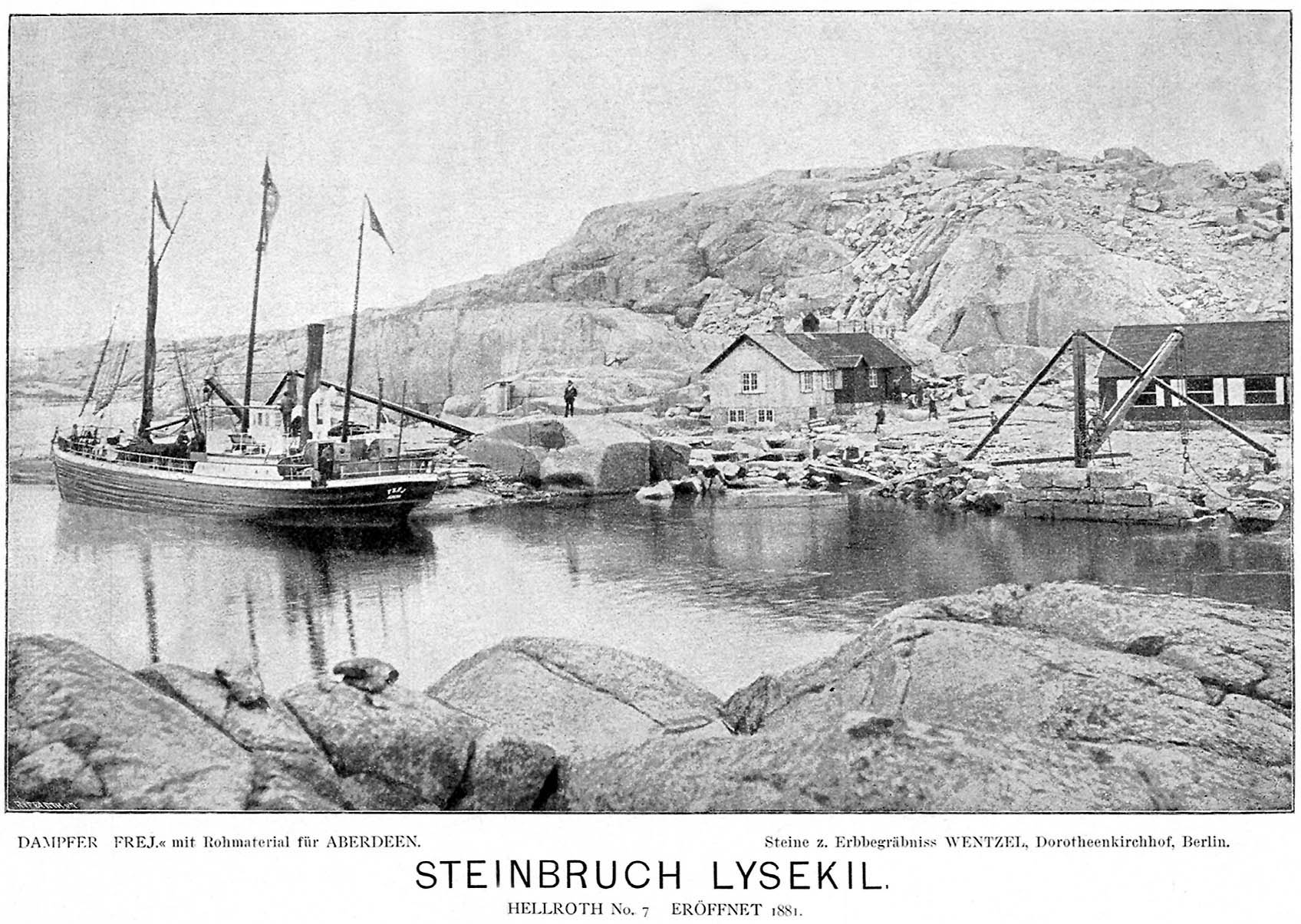|
Stone quarrying – and its granite work Already by the 1840´s it is likely that stone was being cut in Lysekil. In the area of Stångehuvud, stone quarrying started in the beginning of the 1870´s. Strangely enough the altered power balance between Germany and France affected the quarrying of granite in Stångehuvud. |
|
|
After Germany had won the Franco-Prussian war of 1870-71 there was an increased demand for stone for constructing victory monuments in a number of German cities. A German company that worked with stone-quarrying was Kessel & Röhl in Berlin. This company received orders for stone to build the victory monuments. The company found the reddish and coarse-grained granite at Sångehuvud very interesting. A few years after 1870 the German company started stone-quarrying at Stångholmesund in Stångehuvud. The granite was taken from the rocks in the slope near Stångholmesund.
Swedish constructions of granite from Stångehuvud: Vasakyrkan, Gothenburg Kungsportsbron, Gothenburg Granite
stairs at Gula villan, Lysekil
|

The stone quarrying in the area of Stångehuvud were made with manual methods. Photo: S. Haeger |
|
|
|
|
Many
deliveries of granite from Stångehuvud to monuments in Germany Granite from Stångehuvud has been cut for monuments in several German cities. A number of these relate to the German emperor Wilhelm I (1797-1888). Around ten of them were destroyed during the Second World War. Look at a map of Germany with places where granite from Stångehuvud was delivered. Granite from Stångehuvud was delivered to monuments in these cities (red point• = the bedplate of granite is no longer there). Altenburg
Granite from Stångehuvud was delivered to Helgoland off the German North Sea-coast granite for • the Hoffman v. Fallersleben-monument. This monument, built in 1891, honoured the German poet August Heinrich Hoffmann von Fallersleben (1798-1874). He wrote one of his most well-known works, the German national anthem, Deutschlandlied, during a vacation on Helgoland in 1841. The monument of granite from Stångehuvud was unfortunately destroyed during military actions against England in the final phase of the Second World War. Granite works by Kessel & Röhl up to 1892 are listed in "Die Granitwerke von Kessel & Röhl in Berlin". 1892. Granite
from Stångehuvud
in Amsterdam Granite
from Stångehuvud in Copenhagen Read
more about the granite from Stångehuvud in
Jesuskirken. Granite
from Stångehuvud in USA The statue, see photo, was made in 1897 by the German sculptor Rudolf Siemering (1835-1905). Continued
stone quarrying on a larger scale Even in Sweden bridges have been built with this type of granite. The imposing Kungsportsbron in Gothenburg and the railway bridge over Nordre älv at Kungälv are two examples. The bridge over Nordre älv has not been kept in its original form, however. |
|
 |
Vasakyrkan was designed by the architect Yngve Rasmussen in late-Romanesque style with seating for 1500 persons – one of the largest granite churches in Sweden. During the years 1905 to 1908 a total of 5000 cubic meters of facade stone were shipped from Stångehuvud to the Vasa church building site. A dozen towering columns inside the church originate från Stångehuvud.
|
|
Stångholmesund,
postcard motive, probably in the 1890´ies. Buildings for the stone
quarrying activities are visible on the |
|
|
In
the first decades of the 20th Century good times prevailed for the stone industry in
Bohuslän on the whole, although economic problems and some ensuing strife between workers and employers occurred
at times. Several boats, galleys and steamers departed daily from
the stone districts in Lysekil to destinations near and far. Loads of
building stone were sent all the way to Singapore and Argentina. But one person devoted special attention to Stångehuvud and its nature. During the years 1916-1920 Calla Curman ran a stubborn and successful struggle for the rocks, that in 1925 culminated in her donation of the area as a gift to the Royal Swedish Academy of Science.
|
|
